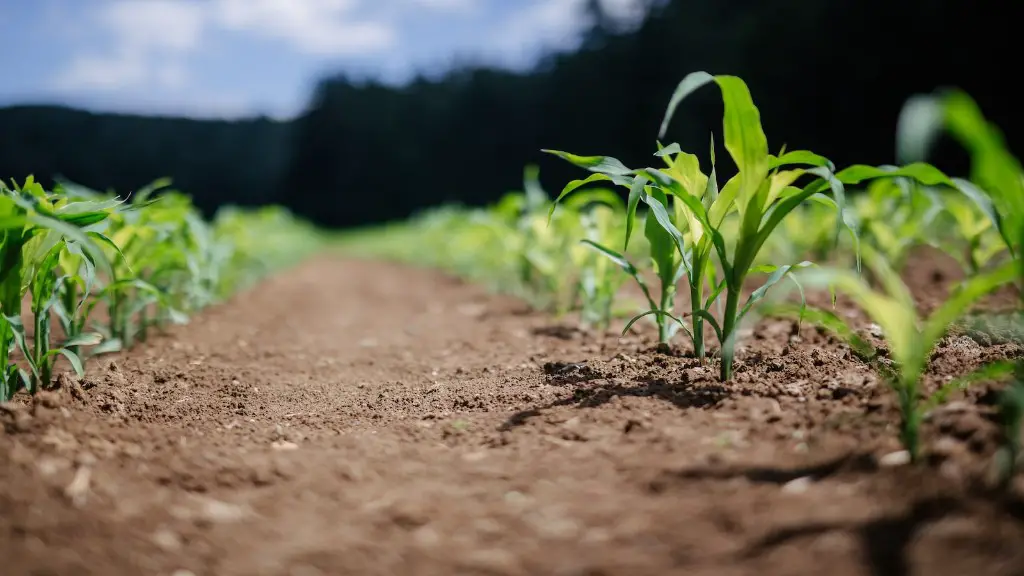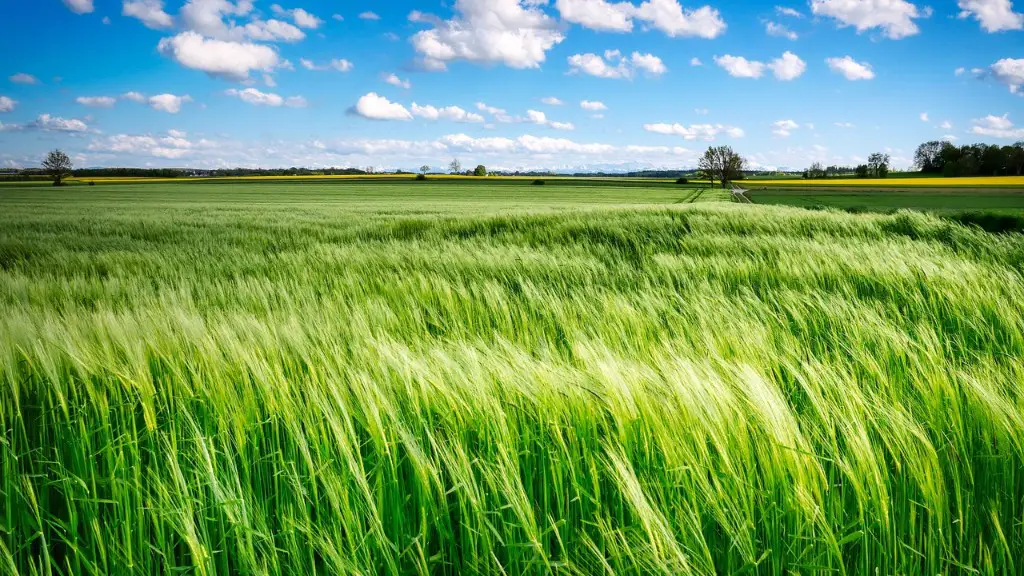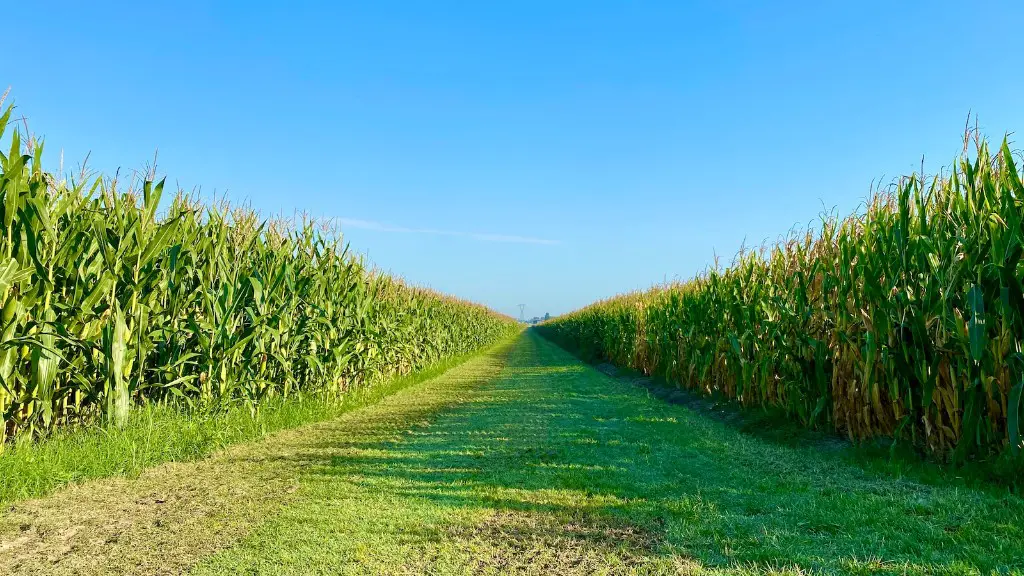The environment can suffer a great deal from the production of harmful emissions, and agriculture is one of the leading causes of this. Despite the fact that agriculture is an essential pillar of society, agriculture’s contributions to global warming are often overlooked, with the agricultural sector being responsible for close to one-third of the world’s greenhouse gas (GHG) emissions. Unfortunately, these emissions are growing, and today, the agricultural sector is responsible for over 10% of global greenhouse gas emissions.
The emissions associated with agriculture occur in many ways. These include methane released due to direct human activities such as animal husbandry, fertilizer use, and biomass burning, as well as emissions from the conversion of land to agricultural uses like deforestation. In addition, Nitrous Oxide (N2O) is also released when organic matter decomposes, and soil erosion releases particulate matter (PM) into the air.
Furthermore, climate change increases the amount of emissions released from agricultural practices due to the increased frequency of extreme weather events. This can result in soil eroding and transport of GHGs from the soil to the atmosphere. Global warming also disrupts rainfall patterns, leading to drought and destroying crop yields, and increasing the use of fertilizer for food production.
The situation is further worsened by a lack of awareness among policy makers regarding the contribution of the agricultural sector to global warming, making it difficult for policies to be designed to target this sector specifically. To make matters worse, most of the existing policies focus on the individual farmer instead of the sector as a whole, and often lack the necessary incentives to reduce the emission levels.
Given the multifaceted nature of agriculture’s emissions and the various sources, a comprehensive approach will be required to tackle the growing emission problem in this sector. Using a combination of approaches including agri-environmental incentive programmes, technological innovations, and improved land-use planning alongside long-term investment in research and development can help to reduce agriculture’s emission levels.
Deforestation and Agriculture
Deforestation has been recognised as one of the major causes of climate change, with deforestation due to agricultural expansion responsible for up to 20% of global carbon dioxide emissions. In addition, deforestation leads to the loss of biodiversity, widespread habitat destruction, and the deterioration of water cycles.
The main driver of deforestation is the expansion of industrialized farming, with the production of crops and livestock needing large tracts of land. This practice not only increases emissions but also disrupts the balance of local ecosystems, leading to soil erosion, water scarcity and loss of biodiversity.
This makes it important for policy makers to ensure that deforestation is addressed when considering the emissions of agricultural activities. This could include policies that aim to create incentives for farmers to practice sustainable farming practices or interventions that restrict or prevent the conversion of forests into agricultural land.
Efforts to combat deforestation must be complemented by efforts to reduce other sources of agricultural emissions such as those caused by fertilizer and livestock production. This can be done through the adoption of sustainable agricultural practices which have a low carbon footprint, such as crop rotation and the use of sustainable pesticides.
In addition, efforts must also be made to improve land-use planning and to create incentives for farmers to use more climate-smart agricultural practices. This could include incentives for farmers to reduce their use of fertilizers, as well as providing access to finance for smallholder farmers to invest in climate-smart agricultural practices.
Improving Soil Health
Soil health is important for agriculture, as healthy soils are vital for food production, biodiversity, water quality, and carbon storage. Poor soil health can lead to loss of organic matter, decreased fertility, and increased emissions of GHGs such as CO2, N2O, and methane.
Many of the current agricultural practices such as tilling and monoculture lead to soil degradation and an overall decrease in soil health. This makes it important for policy makers and farmers to shift towards regenerative land management practices such as zero-tillage and the use of cover crops.
These practices provide multiple benefits such as improved water retention, increased organic matter, and decreased erosion and nutrient loss. In addition, the use of cover crops increases soil fertility which can result in an increase in crop yields, an improved supply of nutrients, and increased soil carbon levels, which helps to offset emissions.
Finally, it is also important to consider the needs of smallholder farmers, as they may not have the resources or access to information and knowledge to adopt new and more sustainable farming practices. To this end, policies must be designed to provide access to resources and knowledge, as well as to provide support for smallholder farmers in their efforts to adopt more sustainable agricultural practices.
Livestock Farming and Emissions
The global livestock sector is a cause for concern when considering the amount of GHGs released into the atmosphere. From animal waste to enteric fermentation from ruminant animals, the livestock sector is responsible for around 14.5% of global GHG emissions.
The primary driver behind this is the use of feed, as livestock need to consume large amounts of grain and other energy-dense feedstocks. The use of such feed, whether in the form of crops, fodder, or manufactured feed, leads to increased GHG emissions due to the emissions associated with their production and their transport.
In addition, the management of animal waste is another source of emissions. Animal waste releases a variety of gases such as ammonia, methane, and carbon dioxide, and the management of animal waste is key to reducing these emissions. This can be done by improving the manure management practices, including the introduction of biodigesters that turn manure into biogas for energy production, and by improving the feed ration management to reduce nitrogen losses.
Finally, efforts should also be made to reduce the overall livestock population and to reduce the demand for animal-based products. This can be done through the promotion of a more plant-based diet, as well as by providing incentives for the use of more sustainable and efficient animal production methods.
Bioenergy and Agriculture
Bioenergy is one of the most promising technologies when it comes to reducing emissions in the agricultural sector. This technology is based on the principle of using biomass materials as a source of energy, such as agricultural waste or energy crops. The burning of these materials to generate energy leads to lower levels of greenhouse gas emissions than fossil fuel sources.
There are a number of ways in which bioenergy can be produced from agricultural sources, including direct combustion of biomass, pyrolysis and gasification, anaerobic digestion, and the use of biogas. These technologies can be used for both small scale and large scale applications, such as producing energy for domestic or industrial use, or for transportation.
In addition to reducing emissions, the use of bioenergy also offers other benefits such as increased energy security, improved efficiency, and the potential to provide additional income sources for farmers.
Given the multifaceted nature of bioenergy production, it is important for policy makers to consider the different aspects of this technology when designing policies. Policies should ensure that the production of bioenergy is done in a sustainable and efficient manner, with adequate emphasis placed on the environmental, economic, and social aspects of the technology.
Conclusion
Overall, agriculture is a major contributor to global warming, with the sector responsible for over 10% of global greenhouse gas emissions. To reduce these emissions, policy makers must consider a comprehensive approach, combining incentives, technological innovations, and land-use planning with long-term investments in research and development. As part of this approach, it is also important for policy makers to create incentives for farmers to practice sustainable methods, and to reduce deforestation, fertilizer use, and livestock production.
In addition, improving soil health and embracing the use of bioenergy are also important components of any comprehensive approach. Soil health can be improved through the use of regenerative land management practices such as zero-tillage and the use of cover crops, while bioenergy can be used to reduce emissions in an efficient and sustainable manner. Finally, policy makers must also ensure that smallholder farmers have access to resources and knowledge to adopt these new practices.





